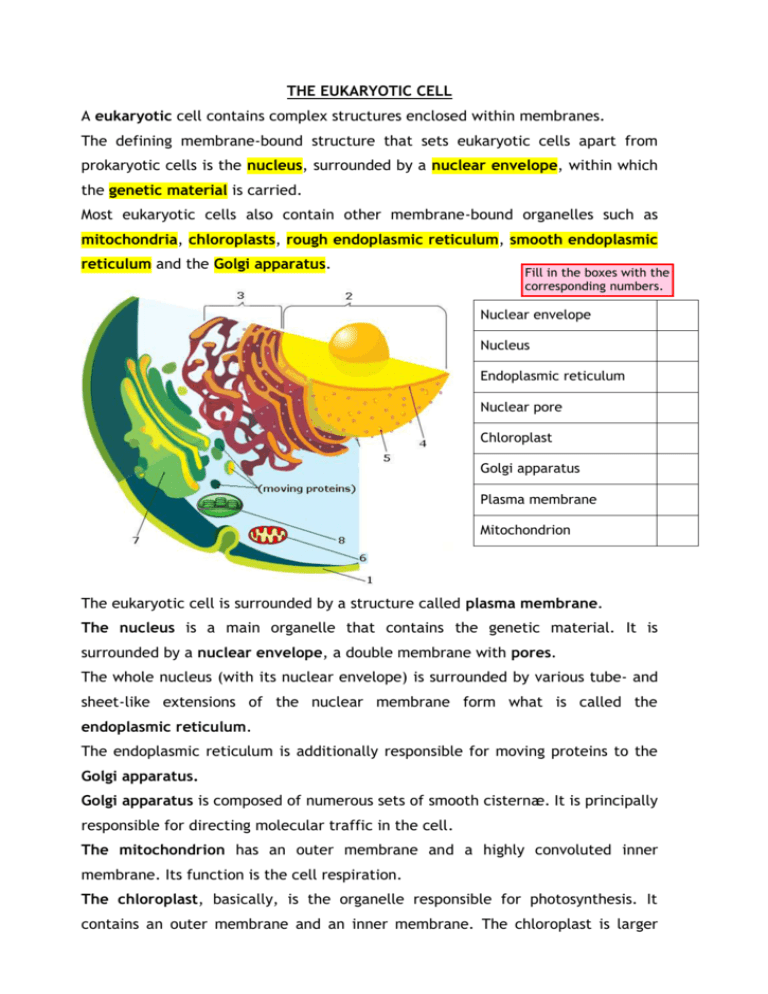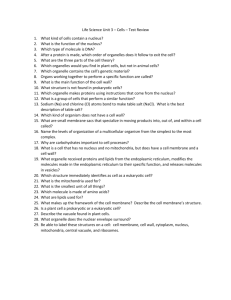THE EUKARYOTIC CELL
advertisement

THE EUKARYOTIC CELL A eukaryotic cell contains complex structures enclosed within membranes. The defining membrane-bound structure that sets eukaryotic cells apart from prokaryotic cells is the nucleus, surrounded by a nuclear envelope, within which the genetic material is carried. Most eukaryotic cells also contain other membrane-bound organelles such as mitochondria, chloroplasts, rough endoplasmic reticulum, smooth endoplasmic reticulum and the Golgi apparatus. Fill in the boxes with the corresponding numbers. Nuclear envelope Nucleus Endoplasmic reticulum Nuclear pore Chloroplast Golgi apparatus Plasma membrane Mitochondrion The eukaryotic cell is surrounded by a structure called plasma membrane. The nucleus is a main organelle that contains the genetic material. It is surrounded by a nuclear envelope, a double membrane with pores. The whole nucleus (with its nuclear envelope) is surrounded by various tube- and sheet-like extensions of the nuclear membrane form what is called the endoplasmic reticulum. The endoplasmic reticulum is additionally responsible for moving proteins to the Golgi apparatus. Golgi apparatus is composed of numerous sets of smooth cisternæ. It is principally responsible for directing molecular traffic in the cell. The mitochondrion has an outer membrane and a highly convoluted inner membrane. Its function is the cell respiration. The chloroplast, basically, is the organelle responsible for photosynthesis. It contains an outer membrane and an inner membrane. The chloroplast is larger than the mitochondria. It contains a third membrane that forms a series of flattened discs, called the thylakoids. Who… a) ___________ photosynthesis? b) __________ proteins to Golgi apparatus? Contains Carries out c) ___________ the whole cell? d) _________ the molecular traffic in the cell? e) ___________ the genetic material? Surrounds Directs f) ____________ the content of the nucleus? g) ______________ the cell respiration? Protects Moves Fulfills








